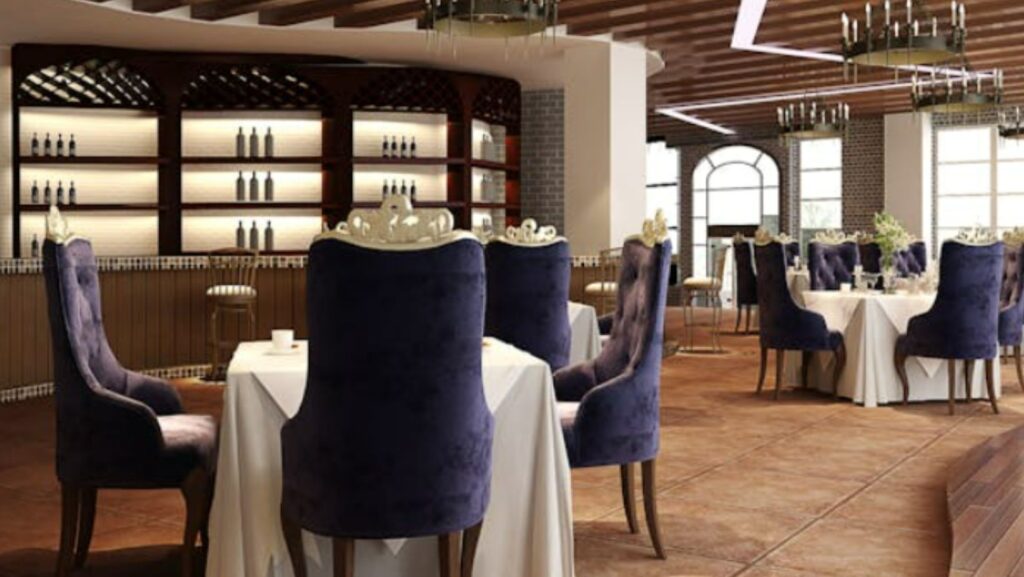Have you ever wondered how restaurants became central to our social and cultural lives? Well, you’re not alone! The restaurant concept, as we know it today, has been centuries in the making, evolving through various civilizations and historical eras. From the bustling street food scenes in ancient Roman marketplaces to the sophisticated dining rooms of modern Paris, restaurants have long served as more than just places to eat—they’re where people come together, socialize, and experience new tastes and cultures.
This journey from simple public eating houses to today’s diverse gastronomic landscapes tells a fascinating story about human society and its unending relationship with food. Join us as we dive into the transformative history of dining establishments, tracing their evolution from the ancient world to the cutting edge of today’s culinary scene.
Table of Contents
Early Beginnings
Long before the advent of trendy cafés and gourmet restaurants, ancient civilizations were setting the stage for communal dining. Returning to the bustling streets of the Roman Empire, where ‘thermopolia’—essentially the fast-food joints of ancient Rome—offered city dwellers and travelers a quick bite. These small cookshops served affordable, ready-to-eat meals, providing a gathering place for people from all walks of life.
Moving forward to medieval Europe, public dining evolved with the establishment of inns and taverns. These places were crucial for travelers, offering a meal and a bed for the night. The fare was hearty and simple, reflecting the local cuisine and what was readily available. Picture a large, shared table where strangers became companions, sharing stories over a pot of stew or freshly baked bread. These establishments mirrored the social and economic structures of their times, making dining out accessible to the masses and not just a luxury for the elite.
This early model of communal dining laid the groundwork for the modern restaurant. It blended the necessity of nourishment with the pleasure of company, setting a foundational cultural norm that eating out is an experience to be savored and shared.
Birth of the Modern Restaurant
The 18th century brought a culinary revolution to the streets of Paris, setting the stage for the birth of the modern restaurant. At that time, the concept of “restaurants,” originally meaning “restoratives,” referred to establishments serving healthful broths. These broths were believed to have restorative properties, catering to a burgeoning middle class seeking both nourishment and a touch of sophistication in their dining experience.
As these dining spots gained popularity, they began revolutionizing how people ate out. For the first time, customers could choose their meals from printed menus, a novel concept that offered a sense of autonomy and luxury previously unseen. Furthermore, introducing individual tables marked a significant departure from communal dining, allowing for a more personal and private dining experience. This shift not only elevated the status of dining out but also mirrored the evolving social dynamics of the time, where individualism and personal space started gaining value.
These revolutionary innovations in dining laid the foundational practices for global dining customs that emphasized customer choice, privacy, and the overall dining experience, heralding a new era in the culinary world.
The Industrial Revolution: Restaurants for the Masses
The Industrial Revolution catalyzed massive growth in the restaurant industry, transforming it to cater to the burgeoning urban population and the influx of travelers. As cities grew and populations became more mobile, thanks to technological advancements like the railway, dining out became an integral part of society. Railways didn’t just make travel between cities easier; they made exploring culinary worlds more accessible. This accessibility helped people venture beyond their local eateries, fostering a demand for variety in dining experiences.
With the rise of urban centers, restaurants began to diversify, targeting various segments of society. From luxurious dining halls serving the elites to modest cafes catering to middle-class workers, the industry saw a specialization that catered to distinct preferences and economic statuses. This period marked a significant shift from the exclusive, often inaccessible dining settings of the past to a more inclusive restaurant scene. This evolution allowed restaurants to serve a wider audience, integrating dining out as a regular part of urban life and setting the stage for further culinary innovations.
Culinary Innovation and Global Influences
The 20th century ushered in an era of unprecedented global connectivity, profoundly influencing the culinary landscape of Western restaurants. Driven by waves of immigration and the ease of global travel, ethnic cuisines and fusion cooking began to make their mark on traditional Western menus.
This culinary melting pot was stirred by the arrival of immigrants who brought their distinct flavors and recipes from around the world, enriching the local food scenes. For example, deltarestaurant.gr showcases how modern European restaurants are integrating global culinary techniques to offer a unique dining experience.
Simultaneously, the rise of iconic restaurant brands played a pivotal role in transforming local dining landscapes. These brands popularized international dishes and standardized the quality and experience of dining out, making exotic flavors more accessible to a broader audience.
From Italian pasta to Japanese sushi, these global influences introduced diners to a new world of flavors and dining experiences, pushing the boundaries of traditional cuisine and setting new trends in the food industry. The proliferation of these international dishes has since become a staple of modern dining, offering palates a taste of the world’s vast culinary diversity.
Technological Advances and Their Impact
Technological advancements have profoundly transformed the restaurant industry, revolutionizing everything from order placement to meal delivery. The fast food revolution, spearheaded by brands like McDonald’s, introduced the concept of quick service and efficient, standardized food preparation, laying the groundwork for the franchising model that allowed for rapid expansion and global consistency. Meanwhile, digital innovations like online reservations and food delivery services like Uber Eats have reshaped how customers interact with restaurants. These technologies not only streamline the dining experience but also broaden the reach of restaurants, allowing them to serve customers beyond traditional boundaries.
These advances have fundamentally changed dining expectations and restaurant operations. Customers now anticipate greater convenience and speed, seamless service, and personalized dining experiences powered by digital tools. For restaurateurs, technology offers tools for better inventory management, enhanced customer relationship management, and innovative ways to engage with diners, from personalized marketing to sophisticated data analytics that guides business decisions.
The Modern Dining Scene
Today’s dining scene is increasingly defined by trends such as the farm-to-table movement, sustainability in food sourcing, and the integration of digital technologies that enhance dining experiences. These trends are not just fads but respond directly to consumer demands for healthier dining options, ethical sourcing of ingredients, and greater convenience. Restaurants that adopt farm-to-table practices emphasize the freshness of their ingredients, sourced directly from local farms, which supports local economies and reduces the carbon footprint associated with long-distance food transportation.
Moreover, digital technologies in restaurants now facilitate everything from table reservations and order customization to payment processing, aligning with the modern diner’s expectation for quick and efficient service. This technology integration not only meets the demand for convenience but also helps restaurants operate more efficiently, reducing wait times and improving the overall customer experience. Together, these trends showcase a dynamic industry that continues to evolve in response to changing consumer preferences and environmental considerations.
Conclusion
From the ancient Roman Thermopolis to today’s high-tech eateries, the evolution of restaurants has mirrored the complexities and cultural shifts of societies worldwide. These establishments have grown from simple communal eating spaces into sophisticated venues that cater to diverse and refined tastes, continuously adapting to the economic, social, and technological landscapes. Looking ahead, we can anticipate further transformations, including the rise of virtual dining experiences and further technological advancements that could redefine convenience and interaction within the restaurant industry. As we move forward, these innovations promise to further enrich how we experience and enjoy food in communal settings.












